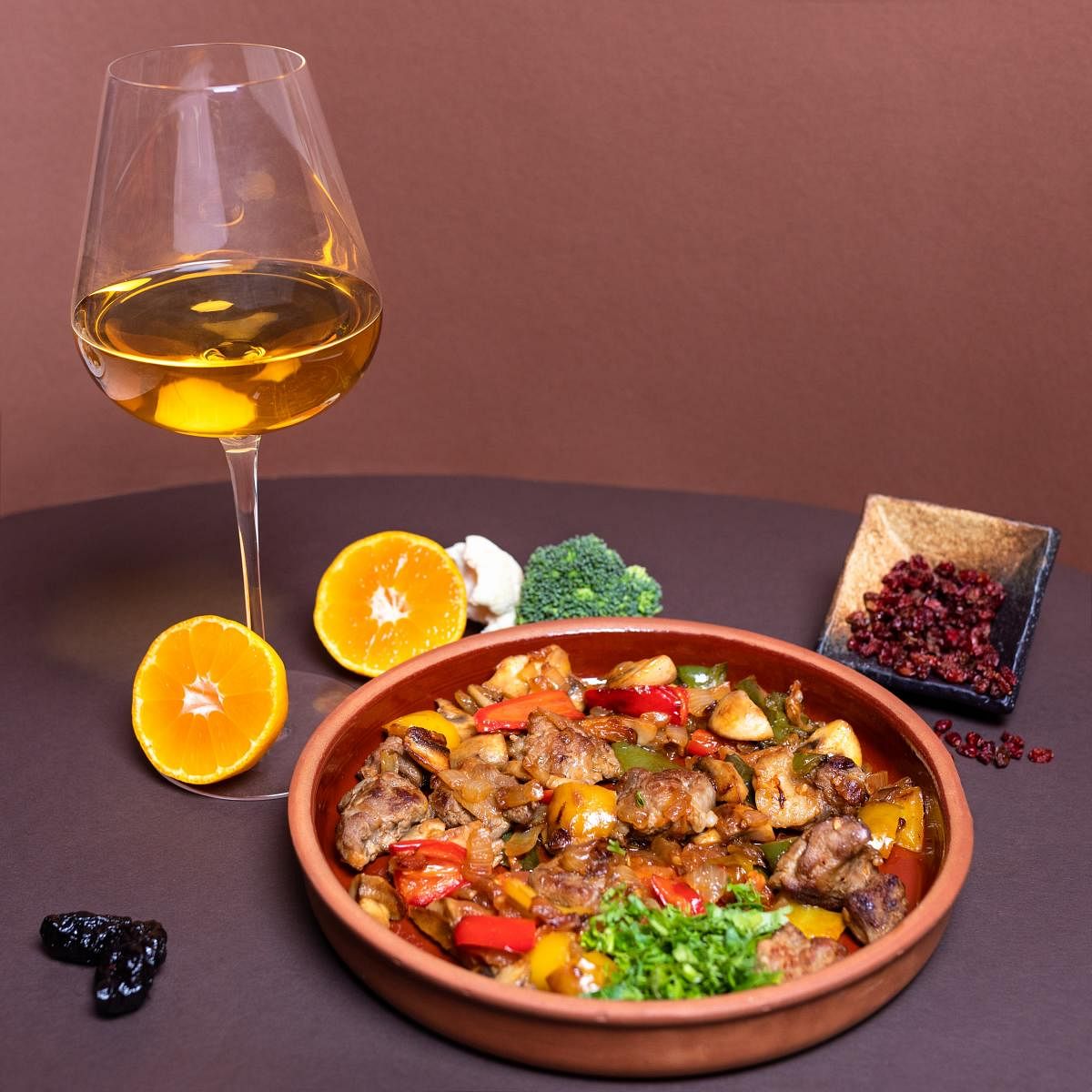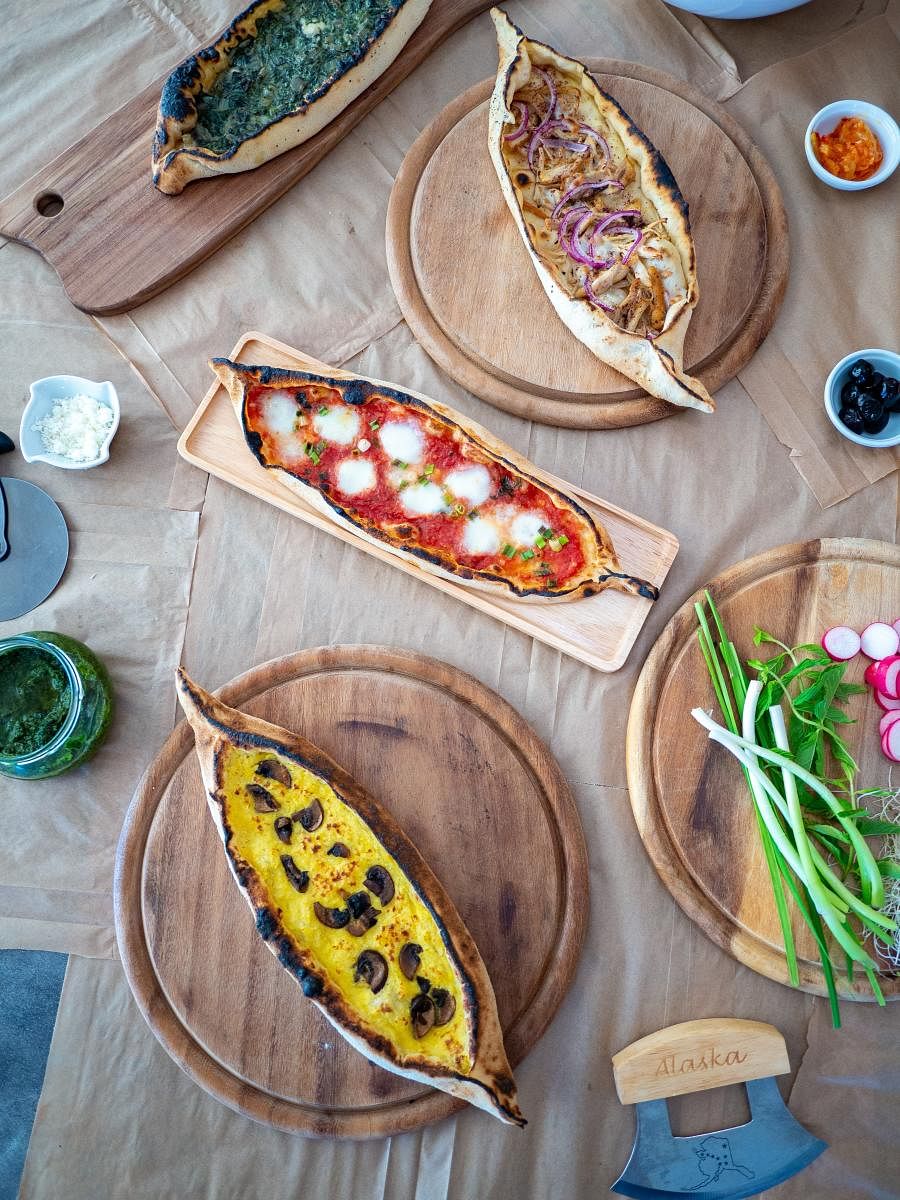

Back in the glory days of the Ottoman Empire, one of the unintended consequences of military adventurism occurred when the Turks first tasted exotic spices from the East and discovered they couldn’t do without them; consequently, their chefs adapted and perfected the use of spices in many of their classic dishes. The result of this culinary assimilation spread far beyond their borders with Turkish-style pastries, the quintessential baklava made with filo pastry and pistachio, gaining popularity universally.
The classic Turkish style of cooking is characterised by a light hand with spices fortified by time-tested methods of grilling food over charcoal. While we pride ourselves on our tandoors, Turkish BBQ methodology has left an indelible impression from Tokyo to Toronto.
At the heart of Turkish food is the olive which grows in abundance all over the country, particularly in the West. Olive oil is a cooking medium while cold-pressed extra virgin oil is used in salads and dips. The classic Mediterranean diet is rich in fresh leafy vegetables, herbs and seafood with some emphasis on lamb, beef, chicken, nuts, garlic and lentils and the humble eggplant. Turks don’t enjoy cilantro; they much prefer spices such as cumin, pepper, mint, oregano, parsley and paprika. A Turkish meal typically begins with a thin soup known as a corba, which is the twin separated at birth from our shorba. Soups are made with lentils, wheat, trotters or a delightful yoghurt soup made of gently simmered lamb bones and
yoghurt, embellished with fresh lemon juice and egg.
In medieval times, soup was the morning meal of choice for young Turks but nowadays breakfast is eggs, tomatoes, olives, a selection of cheeses and peynir (paneer), preserves and marmalade, honey and the brilliant spicy beef sausage known as sucuk, pronounced sujuk. They also have menemen: tomatoes, peppers and onion simmered in olive oil and topped with freshly beaten eggs and cheese: believe me the Parsis may sweat all day over a hot stove but their akuri doesn’t even come close.
Karnıyarık is popular through the length and breadth of the country: gently sautéed eggplant topped with a slice of minced meat, onion, parsley, garlic and tomato filling, rich, hearty and voluptuous. Or Turkish pizza, the flatbread known as lamacun: a spicy mélange of onions cooked with spices served on flaky thin
dough, topped with tomatoes, lettuce, parsley and rocket leaves. Tourists nibble a lamacun but real Turks squeeze a generous quantity of lemon juice and roll it up and eat it like a katti roll. Lamacun is believed to have Syrian roots: it is essentially food from the Levant and the Arabic translation is “dough with meat.”
If the olive is the heart of Turkish cuisine, the soul would have to be the kebap: the catch-all name for minced beef or lamb pressed onto a skewer and grilled over a charcoal fire. Turks enjoy lamb or beef kebaps, but nowadays, thanks to Istanbul becoming Bollywood’s go-to destination, chicken kebap has become ubiquitous. My favourite is the Iskender kebap, a staple in Northwestern Turkey that has roots in Iraq. Named for its creator, Iskender Efendi Konagi from Bursa, which is just a two-hour ferry from Istanbul and a lovely place in its own right, this is a rare treat which I first tasted in Bodrum where the Iraqi chef, when pressed for the recipe, simpered coyly before saying her principal ingredient was love. First, a simple pita is placed on a cylindrical plate and lightly topped with tomato concasse, a medley of herbs, thinly-sliced lamb and a healthy slather of Turkish ghee: sheep butter. Pop it into a wood-fired oven and when the top is nice and bubbly, it is served it with a scoop of fresh yoghurt: sex on a plate!
Döner: Döner is tourist food. I had a friend who caustically enquired, “Whose the donor?” when he first tried it. Escalopes of meat lightly pounded with a mallet, seasoned with fat, a secret mix of local herbs and spices are skewered on a rotating spit. The meat cooks in its own juices and is sliced diagonally before being packed into a pita with salad leaves.
Köfte : Köfte is the generic term for meatballs, but as my grand aunt Emily observed, albeit in a different context, they come in various shapes and sizes. Kofte are like our cutlets: freshly ground mincemeat of lamb or mutton with 30% fat, mixed with breadcrumbs, minced onions and spices and grilled in a wood-fired oven. Perhaps the best known is the Izgara Köfte, where the kofte is served with roasted green pepper, parsley and dried chilli flakes.
Manti: While Russians make the best dumplings, Turks are no slouches when it comes to this delightful comfort food. The main ingredients are of exceptional quality and once you savour the eclectic marriage of flavours, the springiness of the doughy exterior yielding to the savoury delight of the filling beef or lamb, perfectly seasoned with herbs, you will realise why manti is a far cry from ravioli. U2 frontman Bono is a big fan and he enjoys eating it where the streets have no name.
Pilaf: The variety of pilaf found in Turkey resembles the perfumes of Arabia and the most popular is sade pilav, a bit like the kushka you get in Impie’s or Empire. It is basically plain rice cooked with butter or oil and the pasta known as ehriye. There are a whole bunch of variations with eggplant, chickpeas, kidney or liver or sometimes a whole chicken, enlivened with the grace notes of cinnamon, pepper, thyme, cumin and almonds. A simple grilled fish with just salt and olive oil tastes divine with pilaf.
Mücver: This is a very popular appetiser made with shredded zucchini, eggs, feta cheese and flour or a variation embellished with white cheese or peynir, green onions and mint. It is shallow fried in olive oil and served with a refreshing yoghurt dip enlivened with crushed garlic.
(The author is an old Bengalurean and impresario of comedy and musical shows who considers himself fortunate to have turned his passions — writing and
theatre — into a profession.)